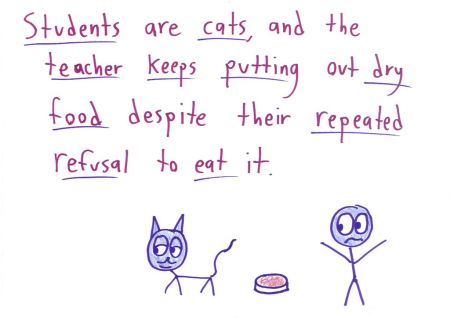Is blog’s role too exaggerated?
This week’s readings seem to over-emphasize the role and function of blogs. In my opinion, blogs are a new form of communicating tool, just like telephones, emails, and web searching tools. These communicating tools are indeed useful and make education more efficient. For example, nowadays students can get an article on web by clicking a few keys on board, instead of going to the library and make a hard copy. However, saving time does not necessarily make one go into the right direction. It is still one’s thinking, opinion, philosophy, and reflection upon the world that determines what information one wants to acquire. A more efficient technique just makes that happen sooner.
Some scholars seem not to get the key problems of present school education. Hitchcock said: “If there is a ‘crisis’ in the humanities, it lies in how we have our public debates, rather than in their content.” In my opinion, this is opposite to the truth. Nowadays the real difficulty of the humanities is that they have NO CONTENT except political correctness. What humanistic scholars really care about is to promote so-called equality rather than pursuing truth. Such equalities could be economic, gender, ethnic, and cultural. Equality is not a bad thing, however, we must keep in mind that equality is subject to higher values such as freedom, and these two things are not same. But this will start a much more complicated topic which is not appropriate to discuss here.
Anyway, blogs can make one’s opinion much more available to the public than traditional methods, but maybe people should keep in mind that occupying more public space does not necessarily make an opinion more meaningful. Just like Campbell revealed, blog maybe is just another form of “narrate”, or story telling.
